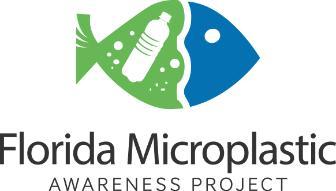Florida Microplastic Awareness Project: K-12 resources
Are you a teacher who is thinking about incorporating microplastics into their lesson plans? Or an informal educator looking for microplastics activities to do with youth? Start with Microplastics for K-12, then check out the curriculum materials below.
Sea Grant-created activities/resources
Does it Sink or Float? is a slightly simplified version of the activity "How Can Different Polymers be Identified?" (below) that has been used at elementary STEM fairs. (Maia McGuire, Florida Sea Grant)
Making beeswax wraps for food. This activity was created by Hawaii Sea Grant
Marine Debris STEAMSS curriculum. This curriculum was developed by Oregon Sea Grant with a NOAA Marine Debris Program grant. There are lessons for grades 4-5, 6-8 and 9-12.
Nearpod module on microplastics for grades 6-8. This free module was created by Angela Greene with Ohio Sea Grant (greene.792@osu.edu)
Plastic Pollution and You. This interdisciplinary 15-lesson curriculum from New York Sea Grant is focused on a human-induced threat to the health of New York’s marine and freshwater aquatic ecosystems.
Sampling for Microplastics in Beach Sand (appropriate for upper elementary school-age through adult volunteers). (Maia McGuire, Florida Sea Grant)
Microplastics Awareness Activity. This activity is great for elementary school science nights! (Laura Tiu, Florida Sea Grant)
Sea Turtle Lesson 6-How Do Human Activities Affect Sea Turtles?. This lesson from Florida Sea Grant's 5th grade sea turtle curriculum contains several marine-debris-related activities.
Other activities/resources
Follow the Friendly Floatees. From National Geographic. In this activity, middle school students follow the path of the Friendly Floatees, a shipment of 29,000 rubber ducks that spilled overboard in 1992. First, students predict where the ducks landed. Then they observe the role of the Earth’s rotation in creating ocean currents. Finally, students update their Ocean Plastics Movement Models with real Friendly Floatees data.
Engineering for Good: Plastic Solutions. Three-week project-based learning module for middle school students focused on developing solutions for negative impacts of plastics on the environment. NGSS-correlated.
How Can Different Polymers be Identified? Lab activity for 5th to 10th grade.
Plastic Pirates. This 68-page curriculum was developed by the German Ministry of Education. It covers a variety of topics related to plastic and plastic pollution. There is a summary for teachers at the end of each chapter with difficulty level and time needed for each of the activities within the chapter.
Mitigating Microplastics (grades 6-8). This curriculum created by Oregon Sea Grant includes three lessons intended to engage 6-8 grade students with the issue of microplastics in the ocean, analyzing both the problem and possible solutions. The lessons are structured to include opportunities for student inquiry, as well as collaboration and engagement with real data collected by scientific researchers working in the field. Each lesson includes an estimated length, which will vary by classroom. The entire curriculum is designed to take about one week, but may be extended by including a project at the end of the curriculum.
Marine Debris Toolkit for Educators is one of many educational materials available from NOAA's Marine Debris Program
Ocean Plastics Academy. Developed in collaboration with a broad coalition of educators, scientists and industry experts, Ocean Plastics Academy combines a suite of curriculum-aligned resources with practical activities that help schools radically reduce their use of single-use plastics. The resources have been designed to teach ages 5-16, aligned to the National Curriculum for England programmes of study for Science, Geography and Design & Technology.
Plastic Challenge (grades 2-11). This is a series of lessons which are designed to extend students’ knowledge and understanding of plastics and plastic waste on a global scale. The lessons target students in elementary, middle, or high school.
PlasticSeas. In 2018, EarthEcho sponsored an expedition for teachers to investigate the topic of plastic pollution in Australia. A series of lesson plans (most designed for middle school, but one is for high school students) is available for download from the website. Lessons are correlated to Australian education standards and NGSS.
The Educator's Guide to Marine Debris: Southeast and Gulf of Mexico has many great marine debris-related activities for teachers
Volvo Ocean Race Plastic Pollution Curriculum materials. Suitable for ages 6-12 with presentations, active learning components in teachers guide, worksheets and booklets. Available in 6 different languages.
Washed Ashore Integrated Arts Marine Debris Curriculum. This 12-lesson curriculum connects science and art to help students understand the plastic pollution problem and communicate about it through art.





